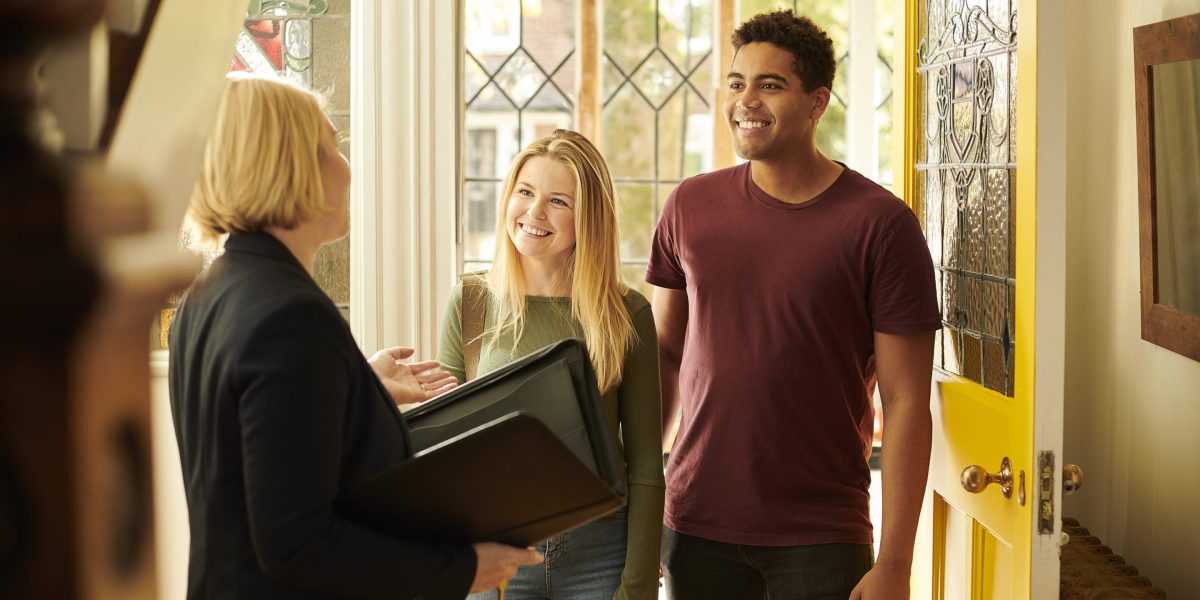
The home goods category has seen its share of twists and turns over the past five years: a pandemic-era boom and then a slump when consumers pivoted toward travel and experiences rather than physical items. Now, it’s facing headwinds in the form of tariffs and an uncertain economy, and generative AI could be changing how people shop.
Kate Gulliver, CFO and chief administrative officer at Wayfair, spoke with CFO Brew about her career, and about her company’s plan to roll with the punches.
From startup to category leader: In some ways, Gulliver has grown along with Wayfair. After working in private equity, she joined the company as head of investor relations in 2014, and helped to run its IPO. At that time, it had about $1 billion in sales and 2,000 employees, Gulliver said. She describes it as “a super high-growth but relatively immature company from a systems and process perspective.” Today, Wayfair employs around 12,000 people and brought in $12 billion in revenue from June 2024 through June 2025.
From investor relations, Gulliver became global head of talent, and was named CFO and CAO in 2022. Her career at Wayfair has evolved in an organic fashion.
“I largely let my career be guided by the opportunity most immediately in front of me,” she said. “I’ve never tried to guide toward ‘10 years from now, here’s where that role is getting me.’ It’s been more ‘Is this the next right move?’”
As a combined CFO and chief administrative officer, Gulliver has plenty on her plate: HR, finance, real estate, legal and compliance, corporate affairs, and communications all report to her. She enjoys the breadth of the dual role, which she says gives her insight into the “backbone” of the company. “Intellectually,” the many departments she oversees “can feel quite different day to day, which is fun,” she said.
A turbulent five years for retail: As a seller of discretionary goods, Wayfair has been on a rocky ride over the past five years. It was able to capitalize on the home goods boom of the pandemic, when shoppers stuck in lockdown were buying items for their spaces. But as restrictions lifted and consumers pivoted toward spending on experiences, it saw net losses for three consecutive years. Wayfair had to restructure and underwent several rounds of layoffs, cutting around 13% of its workforce, or 1,650 jobs, in 2024.
Now, though, the category is “starting to stabilize,” Gulliver said. Wayfair had a bumper second quarter this year, with revenues rising 5% year over year.
“We’re feeling good about the momentum currently,” she said.
Wayfair isn’t seeing consumer softness yet due to tariffs and economic uncertainty, Gulliver said, though it’s seeing more strength in its high-end lines, such as Perigold, AllModern, and Joss & Main, than in its “core mass” lines. (“There’s no question the higher-end market is stronger than mass,” CEO Niraj Shah said during a recent earnings call.) The company is keeping its eye on the macroeconomic picture, though. It’s doing a lot of forecasting, incorporating both its internal data and third-party inputs such as credit card data and housing market trends, Gulliver said.
So far tariffs haven’t had that much of an impact, Gulliver said. That’s partly because Wayfair is a marketplace. Sellers post many unbranded items that look similar to one another, so they’re largely competing on price, she said. Lower prices also allow for better placement on Wayfair’s search results, boosting sales. Sellers, Gulliver said, are finding ways to absorb or offset tariffs at different points along the supply chain, which is “helping to insulate consumers” from higher prices. “Consumers are still seeing like-for-like pricing,” she said.
AI, how about midcentury modern? Wayfair is also anticipating changes generative AI might make to shopping habits. It’s partnering with some major AI providers on developing agentic shopping tools, Gulliver said. And it’s added GenAI features to its website and app that show customers how furniture might look in different spaces within a home, alongside recommendations for similar Wayfair products. “It’s a fun way to capitalize on how consumers might be changing how they shop,” Gulliver said.
At the same time, the retailer’s made a surprisingly analog move: opening brick-and-mortar stores. Its Chicago store has resulted in a “halo” effect, boosting sales and brand recognition in the Chicago area, Shah said on an earnings call. Three more physical stores are planned in the coming years.
As a Wayfair shopper and home design fan herself (“That is the thing I read about in my spare time”), Gulliver understands what consumers are looking for. But even her broad remit, she acknowledges, only goes so far. “I’m always going to the brand team or the merchant team” and asking, ‘Have we thought about getting this product?’,” she said. “And they’re like, ‘Kate, stay in your lane.’”
This report was originally published by CFO Brew.















